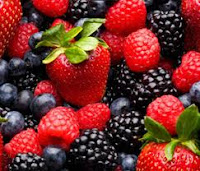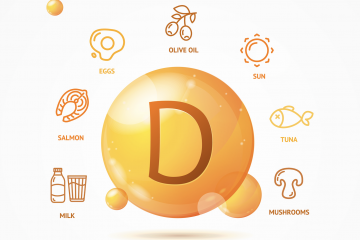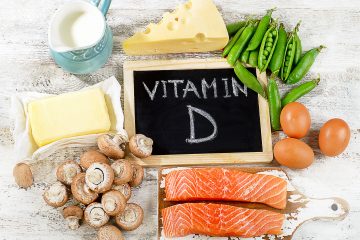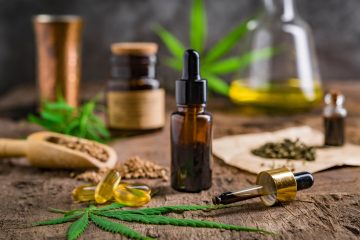Antioxidants and Endurance Athletes
Antioxidants. From athletic performance and anti-aging to heart disease prevention and cancer treatment, antioxidants are touted as key components to fighting disease and optimizing wellness. Once considered the “fountain of youth,” these powerful, free radical fighting nutrients truly are amazing. They fight oxidative stress, which leads to cellular degradation and cell death.
Following their discovery, antioxidant supplements quickly found their way into endurance sports and have been a mainstay supplement ever since. They are touted for their anti-inflammatory effects on athletes, their ability to offset free radicals, and their aid in recovering from training sessions. There is a large body of research on antioxidants for endurance athletes. The conclusions are nothing short of…well, completely confusing.
And so, I figured I’d write a post covering a few important points about antioxidants as they relate to endurance athletes. But first, here are some fun facts about antioxidants…
Antioxidants are most abundant in nature in fruits and vegetables. The antioxidant is a generic term for a nutrient or organic chemical that combats oxidative stress. There are many different antioxidants and several different “types.” Three major types are micronutrients, enzymes, and phytochemicals (which include polyphenols). Well-known micronutrient antioxidants include vitamins A, C, and E and CoQ10. Many enzyme and phytochemical antioxidants are unnamed. Thousands of different ones have been identified, and thousands more are thought to exist. These, too, are found abundantly in fruits and vegetables.
And now for some important notes about antioxidants relating to endurance athletes…
Yes, antioxidants do benefit endurance athletes. They have been shown in legitimate research to decrease perceived exertion in endurance athletes during exercise, significantly reduce muscle soreness and inflammation following workouts, and significantly decrease oxidative DNA damage. However, our approach of isolating antioxidants in highly concentrated supplements may not be as effective as we once hoped or suspected. As is almost always the case, nature’s delivery method is far more effective than ours.
I have commented on past posts that I believe we will one day find out that the enzymes and phytonutrients alongside natural antioxidants are integral to making certain nutrients absorbable and useful to their full potential. Most supplements do not contain the enzymes and phytonutrients, often lost in processing. A couple of recent studies came to this conclusion. In one study, supplemental vitamins C and E showed no reduction in markers of oxidative DNA damage. However, the authors found that in those individuals studied that had a higher intake of fruits and vegetables, decreased oxidative DNA damage was noted. In the other study, researchers studied the effects of a powdered fruit/vegetable juice concentrate versus supplemental vitamins C and E. They found that although the powdered juice concentrate had much fewer vitamins C and E, the antioxidant effects were significantly greater. They concluded this to be related to phytonutrients, which remain present in some powdered fruit/veggie juice concentrates and whole food supplements (Cancer Epidemiol Biomarkers Prev 2000; 9(7): 647-52 and Med Sci Sports Exerc 2006; 38:6, pp1098-1105).
Antioxidant supplementation may not be all good news, however. There are a couple of very important considerations for endurance athletes. The first is that some polyphenols appear to inhibit iron absorption (Penn State 2010, August 23, Polyphenol antioxidants inhibit iron absorption). For example, green tea, known to be high in polyphenols, has been shown to inhibit iron absorption. This is a big deal, as iron is the key micronutrient for red blood cell production and function (see blog post on red blood cell turnover). It is also a micronutrient with a high turnover rate in endurance athletes. Supplementing iron blindly (aka without monitoring blood levels) is generally considered a poor decision, as an overabundance of iron in the system is linked to several serious health problems, including cancer risk (see my blog post on supplementing iron for more information). Therefore, it is important to be aware of the relationship between polyphenols and iron, and thus pay attention to where you are getting your antioxidants. Avoid the polyphenol sources, and stick with fruits and veggies ideally.
Interestingly, Vitamin C, a powerful antioxidant, enhances iron absorption. The second consideration is that over-supplementing antioxidants (levels not established) may elicit a pro-oxidative effect, which is the opposite of the desired anti-oxidative effect. In addition, some recent research suggests that completely inhibiting post-exercise inflammation may be detrimental to recovery.
So, in summary, supplementing antioxidants appears to be beneficial; however, the form of the supplement matters. Research continues to support combination antioxidant supplements, such as those containing a combination of vitamins A, C, E, and selenium. However, powder or whole-food supplemental forms of antioxidants appear to be superior. But, the most effective form is eating lots of fruits and vegetables. The key to supplementing is to keep it in moderation. Unfortunately, we don’t know how much is too much yet. Hopefully, this will be established soon.
I recommend getting a Vitamix (or akin) and filling it with fruits and veggies of many different colors daily. Have a fruit smoothie for breakfast. Eat lots of salads. Do these things, and you will get plenty of unadulterated, wonderfully bioavailable antioxidants partnered with their enhancing phytonutrients and enzymes. If you can’t make this happen, reach for the supplements (of the type mentioned above), because they do appear to work; just keep it in moderation by sticking to the recommendations on the bottles.




0 Comments